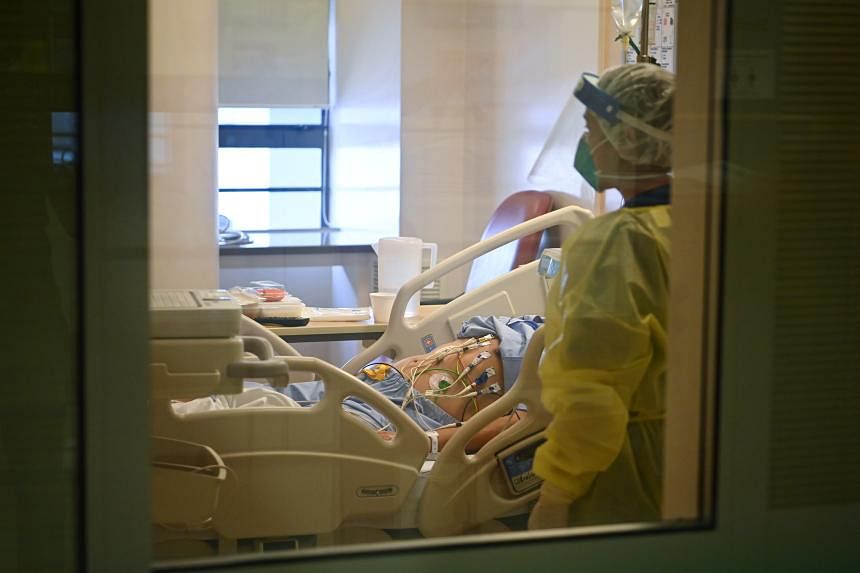SINGAPORE - Hospitals will no longer set aside entire wards for Covid-19 patients, Health Minister Ong Ye Kung told Parliament on Tuesday. This will free up beds that can be used by other patients and help ease the gridlock at emergency departments (ED), he said.
Mr Ong said the practice is no longer necessary as most of the population are vaccinated and have good protection against severe illness. Instead, hospitals will manage Covid-19 patients the same way as they do all other patients – based on the severity of their condition – while continuing with the practice of using isolation beds for patients assessed to be at risk of spreading infectious diseases.
“Hospitals will continue to exercise various precautionary measures on infection control, protect the vulnerable and prevent spreading of infectious diseases in hospitals,” he said.
“They have done so for many years for influenza, for all kinds of infectious diseases; they will apply the same measures now for Covid-19, but without setting aside entire wards.”
Responding to nine questions filed by MPs, he said that anticipating large numbers of patients from the Covid-19 XBB wave, public hospitals had ring-fenced 800 beds. But only about 80 per cent were used at peak, with as many as 300 beds empty off-peak.
“Although this is not a big number, it nevertheless constrains hospital operations and impedes the clearing of patients waiting for beds at the EDs,” said Mr Ong, adding that even a small mismatch in demand and supply of a couple of hundred beds will cause waiting times to spike significantly.
“This flexibility is important to our hospitals, to help them optimise the use of beds. In a crunch situation, it makes all the difference,” he said, while stressing that hospitals will continue with precautionary measures to prevent the spread of infectious diseases.
The crowded conditions are being resolved, though this has not been easy to do in the middle of a pandemic. Successive waves of infection diverted attention and resources to fighting immediate fires, said Mr Ong.
Construction disruptions that delayed the opening of new medical facilities added to the woes. But new nursing homes are now opening following construction delays, he noted.
From the end of 2023, the Woodlands Health Campus and Tan Tock Seng Hospital Integrated Care Hub will also progressively open. With the expanded Singapore General Hospital Medical Campus, they will add 1,900 more public hospital beds in the next five years, said Mr Ong.
Meanwhile, the use of step-down facilities is being ramped up to alleviate the bed crunch. Patients in stable condition waiting to be discharged or transferred to a step-down facility like a nursing home are being moved out to Transitional Care Facilities (TCF).
TCFs are run by the private sector, in close partnership with a public hospital. Three TCFs with a total of 400 beds are already in use, with more being planned.
Mr Lim Biow Chuan (Mountbatten) asked if TCFs cost more as they are run by the private sector. Mr Ong replied that they do not, as patients pay the same rates as in a public hospital.
In spite of the heavy workload at EDs, patients with life-threatening conditions are attended to immediately, said Mr Ong.
Emergency cases that are not life-threatening waited an average of 20 minutes to be seen by a doctor in the first nine months of 2022. In that period, half of the ED patients who needed to be hospitalised got a bed in about seven hours or less.
Compared with 2019, before the pandemic hit, the number of patients turning up at EDs has fallen by 16 per cent – from 2,500 a day to 2,100 a day.
But visits to EDs are volatile during a pandemic, added Mr Ong, with 600 more patients turning up at the peak of the Omicron and XBB waves – a 30 per cent spike to the ED workload.
“In absolute numbers, this is an increase of a few hundred patients every month. It is not huge but adds to the workload of the EDs,” he said.
The proportion of patients who went to EDs with very serious conditions and needing the most attention has also gone up, from 8 per cent in 2019 to 11 per cent in 2022, said Mr Ong.
Dr Lim Wee Kiak (Sembawang GRC) asked about the backlog of elective surgical procedures delayed due to the pandemic. Mr Ong said this was not large, as only about 5 per cent to 10 per cent of such procedures were postponed in the latest wave, and will be cleared as soon as possible.
Mr Gerald Giam (Aljunied GRC) asked if more home support can be given so that patients can be discharged earlier. Mr Ong replied that this is being looked at, alongside other alternatives such as nursing homes, step-down care and community hospitals. He noted that while home discharge frees up hospital beds, it is manpower-intensive and adds to the workload of nurses.
Mr Ong hoped that even if service levels drop and waiting times become longer, “our hospitals and healthcare workers will continue to receive the appreciation, understanding and support of all Singaporeans”.


